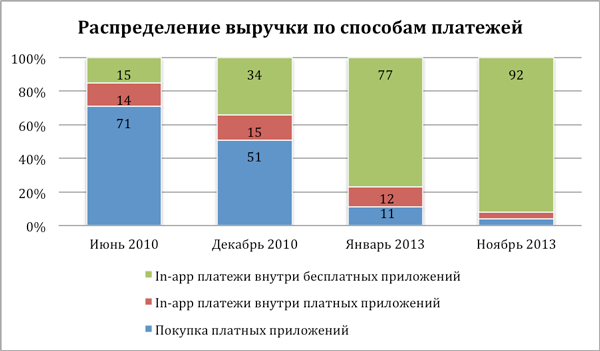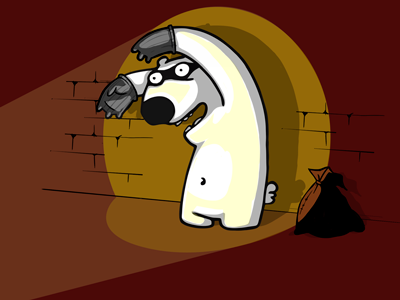Mobile game: where is the money?
 Sometimes, starting to discuss with the game designer his new concept, you realize that he considers it interesting and promising just because it will be interesting to play. Unfortunately, making games that are fun to play is an indie prerogative. If you are going to make money on this game, you need to make a product that will be played, moreover, one that you will pay for. And here creativity recedes before the calculation, and a number of questions arise that need to be answered before sitting at the concept.
Sometimes, starting to discuss with the game designer his new concept, you realize that he considers it interesting and promising just because it will be interesting to play. Unfortunately, making games that are fun to play is an indie prerogative. If you are going to make money on this game, you need to make a product that will be played, moreover, one that you will pay for. And here creativity recedes before the calculation, and a number of questions arise that need to be answered before sitting at the concept.First, it is worth understanding a rather banal fact: the game does not earn anything by itself. The game is only able to convert incoming traffic into revenue. The more incoming traffic and the more efficiently your product converts it into dollars, the greater your revenue. Your only task in the production and further operations is to ensure the incoming flow of potential players and convert it into dollars so that the revenue is more than the cost of attracting this traffic. That's all.
In fact, you have two tasks:
Maximize incoming traffic
Most fully convert it to dollars
Turn people into money
Let's leave the question of attracting traffic for the next part, and talk a little about what kind of games you can do at all, hoping to make money. Before starting to write a concept, and even before starting to think about a particular project, you need to understand how we will turn our players into revenue. Here, as usual, there are several ways:
Paid, freemium model
The player pays for the opportunity to play. This is the easiest for the developer and desired for the user (they say so) way to monetize. We make a quality product with an interesting gameplay, set a fair price. Players pay, play and enjoy. The problem is that this model is dead.
In fact, the players have lost the habit of paying for applications, they have retrained, if they used to go to the store and knew that for a dollar there were high-quality cool-made games, and here student papers were free, now everything is the other way around, the best for free, and in paid parts cut the rope and some kind of nonsense.
In fact, Paid stopped selling from the store, you will be bought only if you read a cool review about your game on an authoritative resource, well, or you are Disney.
')

Despite a significant drop in market volume, this is still a good model if you have a game that, on the one hand, causes a keen desire to talk about it, and on the other, it takes about 40 minutes. Many publications and word of mouth will bring results.
f2p model
 The player pays (performs advertising offers) in exchange for speeding up or simplifying the game process.
The player pays (performs advertising offers) in exchange for speeding up or simplifying the game process.It is this model that allows you to get up to the top of the gross and earn 1M $ + per day, but if you read the article before these words, I would not advise you to get involved with it, well, or at least hire a team that at least has already done a couple of f2p projects that have not earned anything. Making the player pay for what can be obtained for free, while enjoying it and even continuing to do it for many months is more difficult than it seems at first glance.
When developing such a project, one often doesn’t have to think about the gameplay as such, mainly it’s about conversions, retention, virality, monetization points, session length. For the most part, development is carried out around the idea of how to make the user so bad and uninteresting that he had to pay, but not so much that he left, and even get friends to call.
Obviously this is the most promising model, and sooner or later the whole game dev will go here.
In addition to projects from the top of the gross, a huge number of middling companies is monetized, although they do not appear in the tops, they earn good money due to high virality and a dedicated community.
Banner sale
Everything is free, but the player has to look at a bunch of banners.
Almost all the success stories of the last year are related to this model. This is the only true way if you are an enthusiast who makes the game in the evenings.
Traffic is getting more expensive every day, demand is constantly ahead of supply. The user playing your game can always be well monetized.
It is important to understand that you are not monetizing the installation of the application, but the time spent by the user in the game. It is important that the player returns to your application as much as possible. And here you just need an endless gameplay, at a minimum, it should be scoured a few hours.
Here your main competitors will be projects with f2p model. It is difficult to explain to the player why to play your match3 with banners when there is Candy Crash Saga. It is very important to distance yourself from them. The problem with f2p is that, firstly, some mechanics are difficult or almost impossible to monetize, pay attention to them, and secondly, doing f2p on experimental mechanics is too risky, and almost nobody does it, do something completely insane , absolutely unique. Do what the big guys from f2p cannot afford, and the players want to see.
Rate your capabilities

When choosing a project concept, you need to take a sober look at what resources you have to implement and promote the planned project, based on this, determine possible monetization models and then think about the concept within the model. It is foolish to do f2p city builder in the setting of a tropical island, if you are a group of students without a budget, it will not sell without a lot of money.
From my own experience, I would do this: it is worth looking towards f2p, if you have 70-100 or more thousand dollars for a development and experienced team. Just as much on marketing or a good publisher in mind.
If not, the sale of banners is your choice.
Source: https://habr.com/ru/post/209650/
All Articles